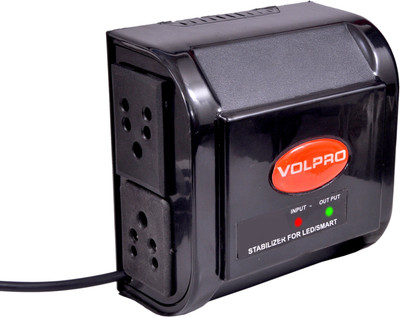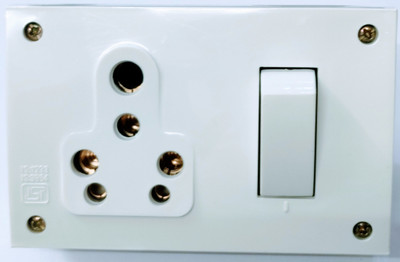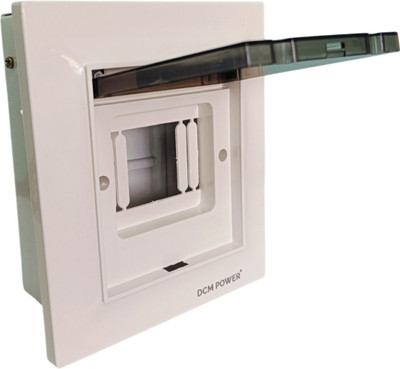
XM-INDIA SINGLE PHASE 32A RCCB-ELCB RCCB-MCB-SINGLE-PHASE MCB (2)
Share
XM-INDIA SINGLE PHASE 32A RCCB-ELCB RCCB-MCB-SINGLE-PHASE MCB (2)
4
117 Ratings & 9 Reviews₹1,111
₹1,499
25% off
Available offers
T&C
T&C
T&C
T&C
Warranty
1 YEAR
Delivery
Check
Enter pincode
Delivery by4 Aug, Monday
?
if ordered before 2:59 PM
Installation & Demo by3 Aug, Sunday|₹288
View Details
Highlights
- WALL MOUNTING
- 32A OVERLOAD MCB
- MANUAL ADJUST mA
- AUTO/BYPASS
Services
- 1 YEAR
- Cash on Delivery available?
Seller
Description
An Earth Leakage Circuit Breaker (ELCB) is a safety device used to detect and protect against electrical leakage or fault currents. It is designed to quickly interrupt the circuit and disconnect the power supply when an earth fault occurs.
Here's how an ELCB works:
1. Sensing: The ELCB continuously monitors the electrical current flowing through the circuit. It compares the current entering the circuit (phase current) with the current returning from the circuit (neutral current).
2. Imbalance Detection: If there is an imbalance between the phase and neutral currents, it indicates the presence of a leakage or fault current. This imbalance suggests that some current is "leaking" to the earth, which could be due to a person coming into contact with a live part or a faulty insulation.
3. Trip Action: When an earth fault is detected, the ELCB reacts by quickly opening the circuit, cutting off the power supply and preventing electric shocks or other hazards. It trips the circuit breaker, disconnecting the faulty circuit from the power source.
Applications of Earth Leakage Circuit Breakers:
1. Personal Safety: ELCBs are primarily used for protecting individuals from electrical shocks. They are commonly installed in residential, commercial, and industrial buildings to safeguard against electric shock hazards that could arise from faulty equipment, damaged insulation, or accidental contact with live parts.
2. Fire Prevention: ELCBs can also help prevent electrical fires. When an earth fault occurs, it may indicate a potential short circuit or arcing fault. By detecting and interrupting the faulty circuit quickly, ELCBs can reduce the risk of fire due to electrical faults.
3. Equipment Protection: In addition to safeguarding people and property, ELCBs can also provide protection to electrical equipment. They help detect faults that could damage appliances, machinery, or sensitive electronic devices due to electrical leakage or insulation breakdown.
Tripping time of ELCB are about in miliseconds.
Read More
Specifications
In The Box
| Sales Package |
|
General
| Brand |
|
| Model Number |
|
| Model Name |
|
| Current Rating Range |
|
| Number of Poles |
|
| Curve Characteristics |
|
| Mounting Type |
|
| DIN Rail Mount Type |
|
| Standard Approval |
|
| Visual Trip Indicator |
|
| Suitable For |
|
| Leakage Current Rating |
|
| Prevention Capability |
|
| Latch Present |
|
| Operating Time |
|
| Operating Voltage |
|
| Insulation Voltage |
|
| Maximum Altitude |
|
| Net Quantity |
|
Additional Features
| Alarm Switch |
|
Dimensions
| Width |
|
| Height |
|
| Weight |
|
Warranty
| Warranty Summary |
|
| Covered in Warranty |
|
| Not Covered in Warranty |
|
| Warranty Service Type |
|
Ratings & Reviews
4
★
117 Ratings &
9 Reviews
- 5★
- 4★
- 3★
- 2★
- 1★
- 59
- 27
- 12
- 7
- 12
4
Value-for-money
Product is very good, i am giving my feedback after uses 2 month.
You can buy it
READ MOREYou can buy it
Parveen Patel
Certified Buyer, Mariahu
Jul, 2022
2
0
Report Abuse
5
Just wow!
nice
READ MOREPrince kumar Pandey
Certified Buyer, Gopalganj
Dec, 2019
1
0
Report Abuse
5
Highly recommended
Good
READ MOREShubham Pathak
Certified Buyer, Chakan
Dec, 2022
0
0
Report Abuse
2
Slightly disappointed
Poor quality products
READ MOREThe Gost
Certified Buyer, Palasa Kasibugga
Dec, 2022
0
0
Report Abuse
5
Fabulous!
Good services m
READ MORESHYAM SHARMA
Certified Buyer, Makum
Jul, 2021
0
0
Report Abuse
1
Useless product
Very bad product this is not working
READ MOREAJAY PANDIT
Certified Buyer, Madhubani
Feb, 2020
1
1
Report Abuse
5
Best in the market!
safe guard
READ MOREpushkar Mishra
Certified Buyer, Ahmedabad
Nov, 2019
0
0
Report Abuse
+
All 9 reviews
Questions and Answers
Q:Where should I put Leakage Current position (3 or 30 mAmps)?
A:Above running leakage current....
Wrichtronic
Flipkart Seller0
0
Report Abuse
Q:Can we use it with agri water pump
A:No
Pallab Chandra
Certified Buyer0
0
Report Abuse
Q:Can I adjust trips vc
A:Yes sir. Pot available to adjust mA
Wrichtronic
Flipkart Seller1
0
Report Abuse
Q:please tell me specifically which RCCBi.e. rating in amp will be required for single phase 2pole domestic line
A:B32 rating can be used.
Wrichtronic
Flipkart Seller1
0
Report Abuse
Q:Is It anti shocked for all home supply?
A:Yes
Wrichtronic
Flipkart Seller0
0
Report Abuse
Q:can it work as change over switch
A:No
Anonymous
Certified Buyer1
0
Report Abuse
Q:is it electric shook proof , Will it trip when anybody gets with contact with electric current,in what time interval it will trip
A:Yes sir
Wrichtronic
Flipkart Seller1
0
Report Abuse
Q:if i touch phase line will it trip shock resistance available please reply
A:when you touch the phase line definitely it will cut off the main line, provided that it should not be on "by pass" mode.
Umang Singh
Certified Buyer3
1
Report Abuse
Q:It's combo of MCB+RCCB?
A:ELCB+MCB it is.
Wrichtronic
Flipkart Seller0
0
Report Abuse
Q:Copper supports inside?
A:Yes sir
Wrichtronic
Flipkart Seller0
0
Report Abuse
Safe and Secure Payments.Easy returns.100% Authentic products.
Back to top









